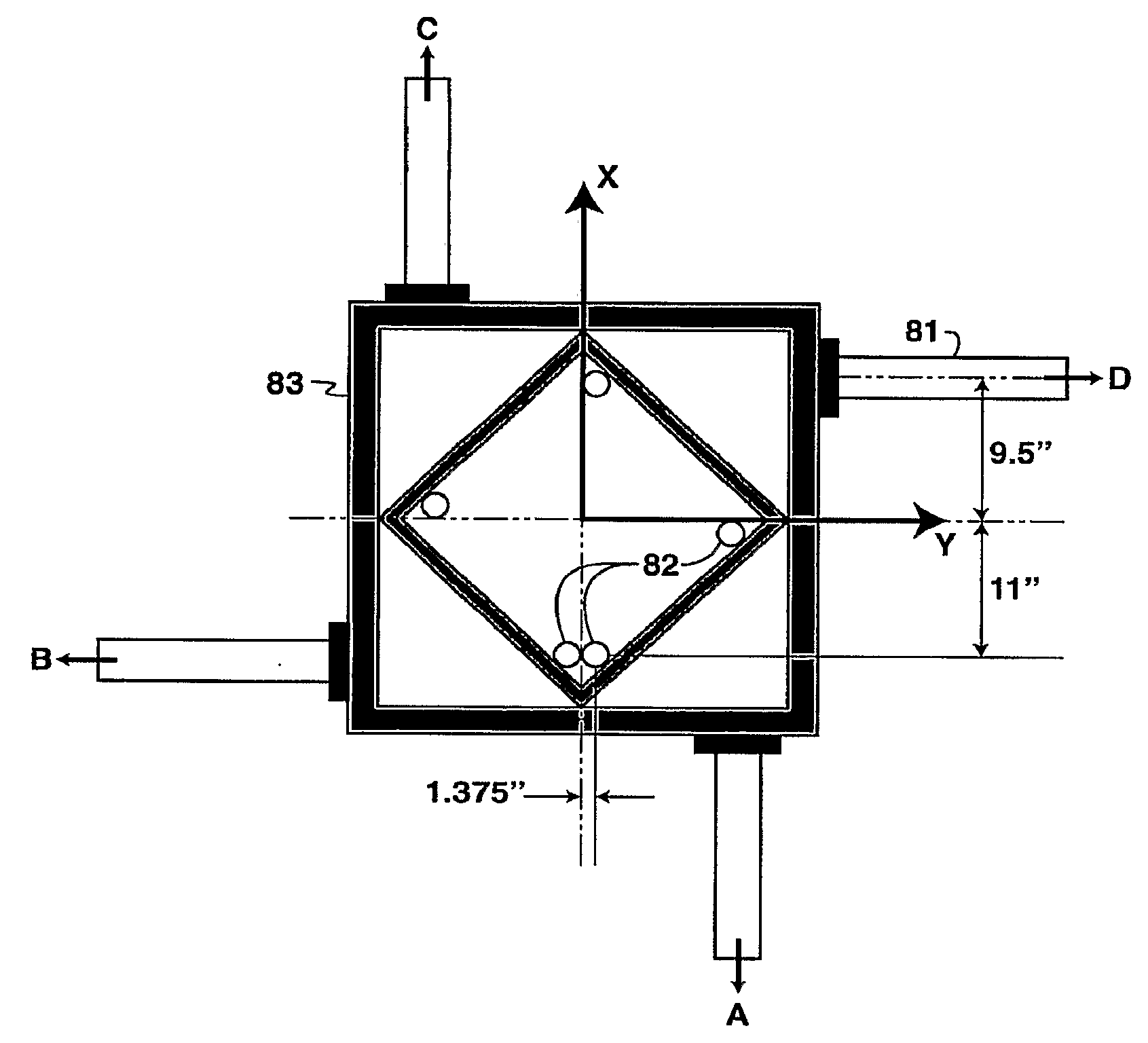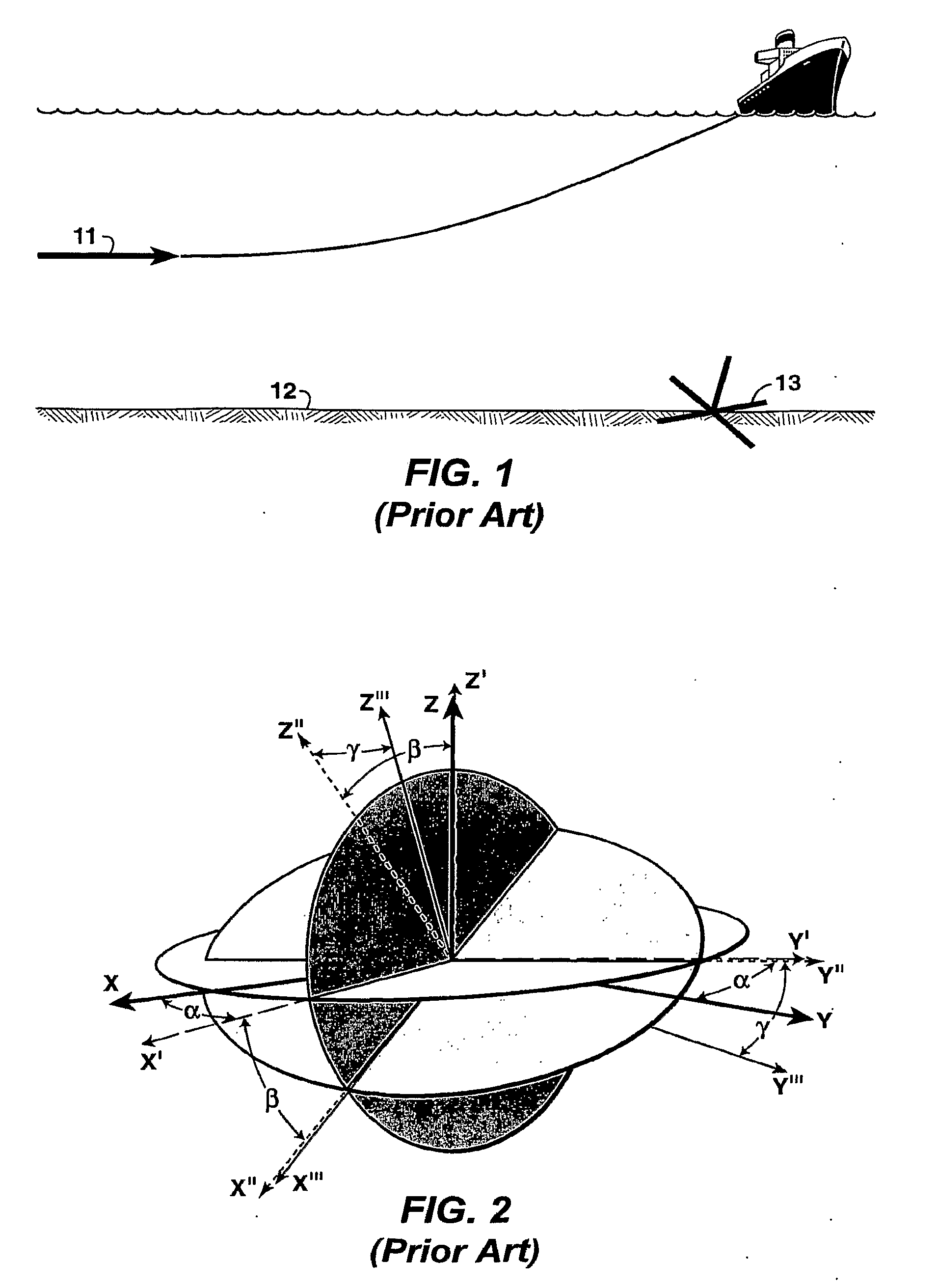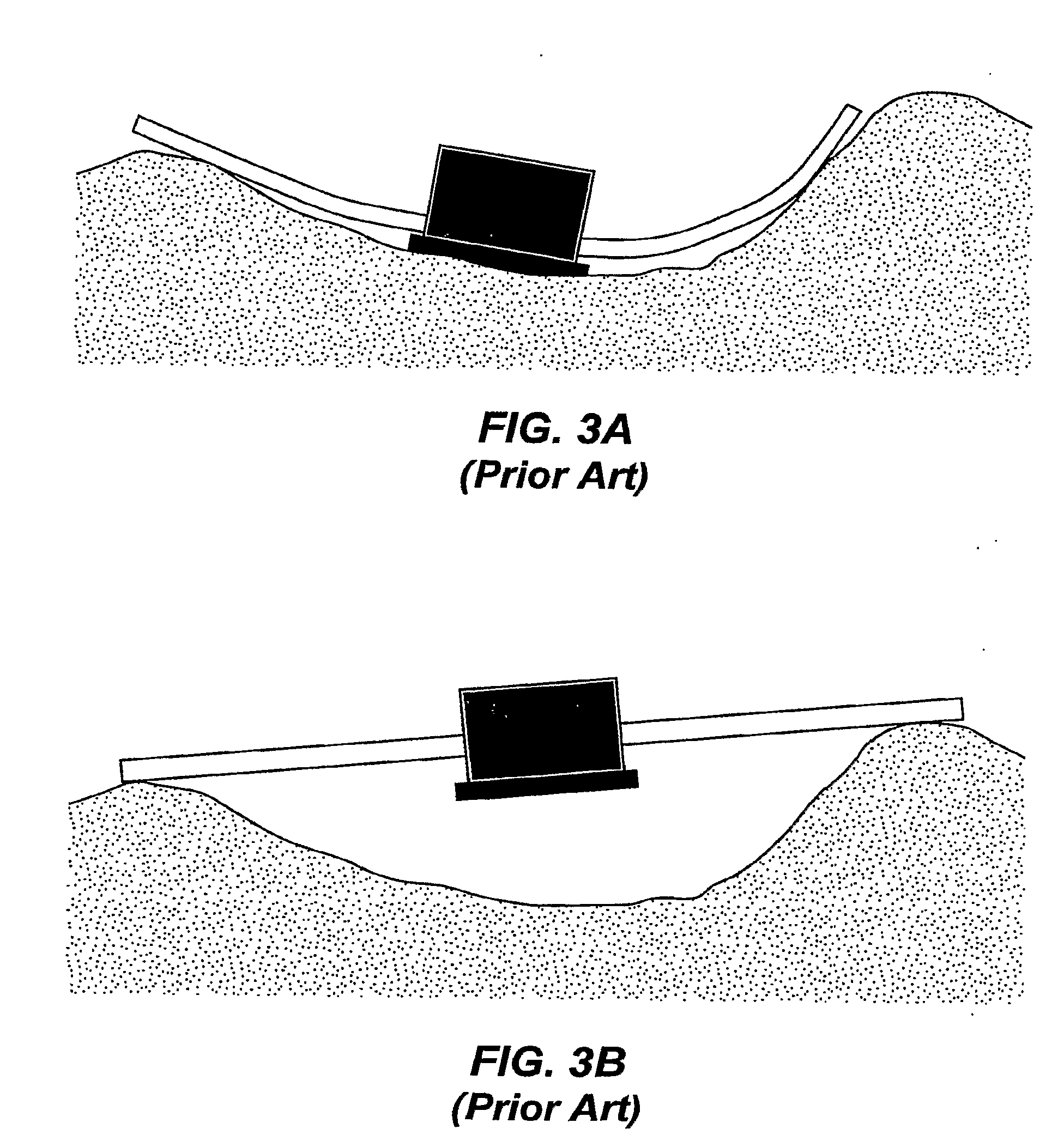Determining Orientation For Seafloor Electromagnetic Receivers
a technology of electromagnetic receivers and orientation, applied in the direction of electromagnetic wave detection, instruments, specific gravity measurement, etc., can solve the problems of insufficient accuracy of attitude sensor mounted on the receiver frame, inability to accurately determine the orientation of the receiver, and low accuracy of the receiver azimuth provided by this method
- Summary
- Abstract
- Description
- Claims
- Application Information
AI Technical Summary
Benefits of technology
Problems solved by technology
Method used
Image
Examples
Embodiment Construction
[0051]The present invention uses the EM receiver frame as a local body reference; the three-dimensional orientation of a dipole is estimated relative to the EM receiver frame. The EM receiver frame must be equipped with a suitable attitude sensor (α′, β′ and γ′) and all local body offsets (dimensions between sensors, mounting points and the like) must be precisely known (preferably to within 1 mm precision) in order to perform the trigonometric calculations needed to solve for the dipole orientation angles from the measured quantities. A vertical cross section of an EM receiver frame 71 is shown in FIG. 7, with acoustic transducer locations 72 suitable for the acoustic ranging (LBL) embodiments of the present invention. An upper part of the frame 73 is called the bale and typically is made of stainless steel. The “flag pole”74 provides a location for an out-of-plane sensor needed for range intersection embodiments of the invention. Actually, the sort of pole used in current receiver...
PUM
 Login to View More
Login to View More Abstract
Description
Claims
Application Information
 Login to View More
Login to View More - R&D
- Intellectual Property
- Life Sciences
- Materials
- Tech Scout
- Unparalleled Data Quality
- Higher Quality Content
- 60% Fewer Hallucinations
Browse by: Latest US Patents, China's latest patents, Technical Efficacy Thesaurus, Application Domain, Technology Topic, Popular Technical Reports.
© 2025 PatSnap. All rights reserved.Legal|Privacy policy|Modern Slavery Act Transparency Statement|Sitemap|About US| Contact US: help@patsnap.com



